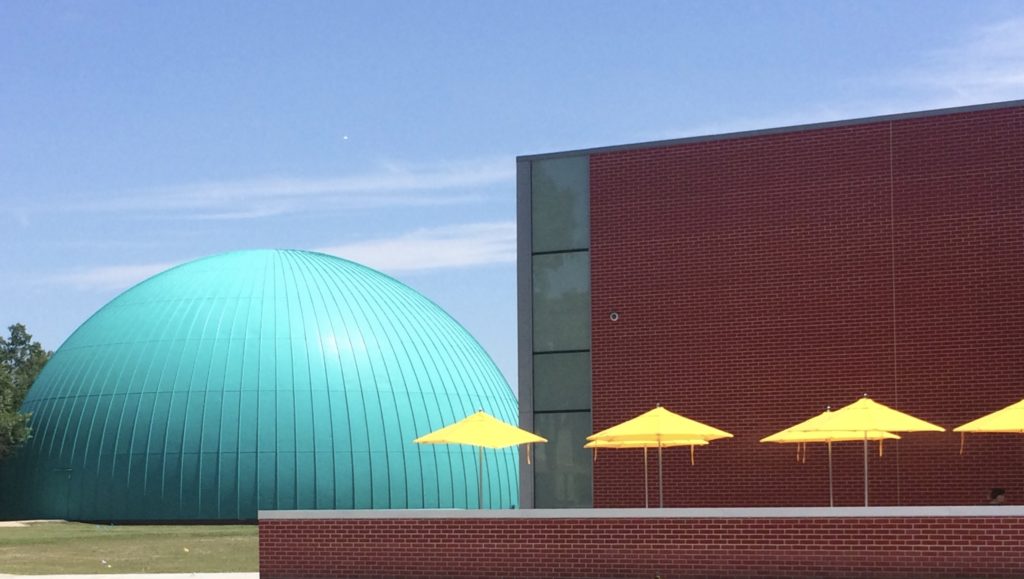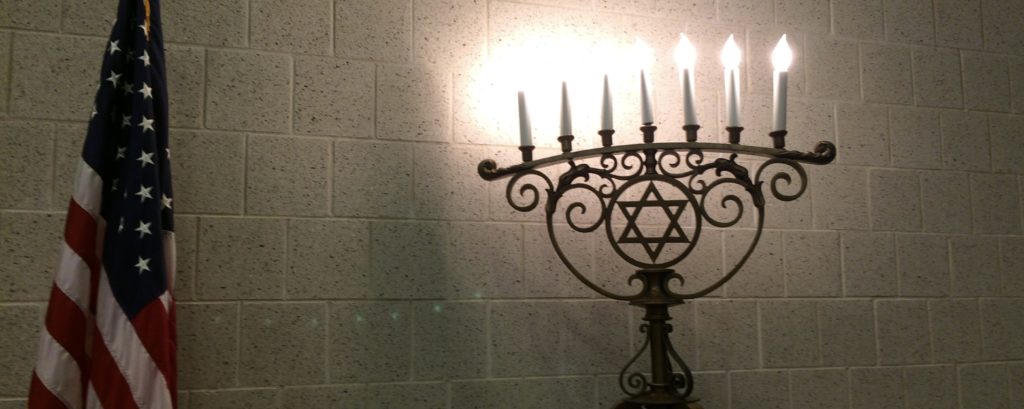By Harold C. Ford
I’m an unabashed, unashamed, scream-it-from-the-rooftops supporter/defender of Flint. And yet once again, my hometown was put on another “worst” list. This time it was a publication called 24/7 Wall St. Using “an index of over two dozen measures to identify the worst cities to live in,” Flint was ranked the 11th worst in the U.S.
I was drawn to the article while perusing the website of the Detroit Free Press and came across an article titled “6 Michigan cities make list of worst places to live in America”. When I spotted a photo of the familiar arches that adorn brick-blanketed Saginaw Street I knew that the Vehicle City had made a shit-list cut once again.
In its Feb. 4 posting, 24/7 Wall St. writers Samuel Stebbens and Grant Suneson stated that cities that made the the list “tend to have high crime rates, widespread poverty, weak job markets, and little in the way of entertainment options or cultural attractions.”
That’s the 10,000-foot view. Here’s the street level view from a Flintstone veteran with seven decades in the community. It’s also the view of someone who’s traveled to all 50 states; all Canadian provinces except for Newfoundland and the Northwest Territories; and some two dozen nations in Europe, Africa, Central America, and the Caribbean.
It took all of 10 minutes to cobble together a baker’s dozen list of reasons why Flint is not the 11th “worst city to live in.”
- Historical impact:
Historically, Flint is David to the nation’s Goliath narrative. Consider the following:
- birthplace of the world’s largest auto builder, General Motors (early 1900s);
- originator of an after-hours community education model that became the envy of the nation (1935);
- a two-month labor struggle, the Sit-down Strike, that birthed the United Auto Workers and helped grow America’s middle class (1936-37);
- election of the first African-American mayor of a major U.S. city since Reconstruction (1966);
- the first municipality in the nation to adopt an open housing ordinance (1967-68);
- release of the movie Roger & Me that signaled corporate abandonment of American communities (1989);
- the Flint water crisis that served as the nation’s wake-up call about the safety of its water delivery systems (2014-present);
- release of the Netflix series Flint Town that shone a light on police-community relations (2018).

- Standard of living, or cost-of-living adjusted to wages:
The ratio of cost-of-living relative to wages is superior in Michigan compared to most other states. According to Governing the States and Localities: “The adjusted hourly wages varied greatly across the country, ranging from $14.31 in Flagstaff, Ariz., to $29.92 in Durham-Chapel Hill, N.C. for 2014. The metro area average for all regions was $22.39 per hour.”
The averages in Grand Rapids, Kalamazoo, and Detroit—the only Michigan cities shown among 191 metro areas—were $24.27, $24.61, and $26.92 respectively. Collectively, the average adjusted wage for those three metropolitan areas in Michigan was $25.27.
By contrast the cost-of-living adjusted wage for six metro areas in California—San Diego, Bakersfield, Los Angeles, Fresno, Stockton, and San Francisco—ranged from a low of $19.05 to a high of $22.44. Collectively, the adjusted hourly wage for six metro areas in the Golden State is $20.45—24percent lowerthan the three metro areas in Michigan.
The data shows what I’ve felt to be true for decades. The average worker in the Great Lakes State earns more than workers in most other states when adjusted for the cost of living. I strongly suspect that this is due to our rich history of labor union activism.
- Flint is a college town:
 Flint boasts four institutions of higher learning—the University of Michigan-Flint (student count at 6,434); Kettering University (1,889), celebrating its 100th anniversary this year; Mott Community College (9,683); and Baker College (4,372). Though Baker has announced the closing of its Flint campus in 2020, that still leaves more than than 18,000 students in the city.
Flint boasts four institutions of higher learning—the University of Michigan-Flint (student count at 6,434); Kettering University (1,889), celebrating its 100th anniversary this year; Mott Community College (9,683); and Baker College (4,372). Though Baker has announced the closing of its Flint campus in 2020, that still leaves more than than 18,000 students in the city.
Add in the enrollments of nine university satellite campuses—Central Michigan, Cleary, Davenport, Eastern Michigan, Ferris State, Northwood, Spring Arbor, Phoenix, and the Michigan State University College of Human Medicine—and you’re talking college town USA.
Flint offers a less expensive alternative to nearby higher ed behemoths MSU (38,996 students) in East Lansing and the University of Michigan (29,821) in Ann Arbor.
- World class cultural center:

Flint Cultural Center (Photo by Jan Worth-Nelson)
Flint boasts a world class cultural center that hosts more than 610,000 visitors annually to the following venues:
- Flint Institute of Arts: second largest art museum in Michigan; 175,000 square feet facility that houses 25 galleries, 15 studios, and a theater; fifth largest art school in the nation serving 1,700 students annually; a collection of more than 8,000 objects from ancient to contemporary; state-of-the-art glass studios that rival any found in Toledo, OH, Seattle, WA, or Corning, NY.
- Longway Planetarium: Michigan’s largest planetarium.
- The Whiting: a 2,000+ seat auditorium that hosts the Flint Symphony Orchestra (FSO) and a rich annual program of diverse performances from Spamalotto Shakespeare.
- Flint Institute of Music: home to the FSO and the Flint School of Performing Arts that serves some 3,500 students.
- Flint Repertory Theatre: with abundant programming for both youth and adults.
- Sloan Museum: a museum of regional history augmented by rotating and diverse exhibits.
- Other: the Flint Public Library, historic Applewood Estate, Buick Gallery, and Perry Archives add to the Flint Cultural Center’s swag.
- People:
Flint’s metropolitan community of 400,000 to 500,000 persons, depending on how far you extend the radius, is homeland for a richly diverse population of families that were drawn to mid-Michigan in the last century from all directions by the emerging auto industry. In one week, for example, I embraced auto magnate descendant Maryann Mott at a cultural event on a weeknight, then high-fived my pool-playing, blue collar pals at the weekend pool league.
- Art:
The Flint community loves art. The aforementioned Flint Institute of Arts is augmented by several local galleries including the Greater Flint Arts Council, MW Gallery, and the newly relocated Buckham Gallery. Smaller displays are common in local libraries, universities, and businesses. Further, in 2018 Genesee County residents passed an arts millage by a robust margin, bringing in $8.7 million a year for the arts for the next ten years.
- Foundational support:
 Though largely abandoned by the auto industry in recent decades, “old automobile money” still supports the Flint community. Start with the C.S. Mott Foundation and its nearly 100-year history of support from its assets totaling nearly $3 billion. The Ruth Mott Foundation, Flint’s second largest foundation, now focuses its grant-giving on Flint’s north side. The Community Foundation of Greater Flint, with assets of nearly $250 million, has served Genesee County residents since its establishment in 1988. Several other smaller foundations and trusts provide support for arts, education and other charitable causes.
Though largely abandoned by the auto industry in recent decades, “old automobile money” still supports the Flint community. Start with the C.S. Mott Foundation and its nearly 100-year history of support from its assets totaling nearly $3 billion. The Ruth Mott Foundation, Flint’s second largest foundation, now focuses its grant-giving on Flint’s north side. The Community Foundation of Greater Flint, with assets of nearly $250 million, has served Genesee County residents since its establishment in 1988. Several other smaller foundations and trusts provide support for arts, education and other charitable causes.
- Libraries:
At least 24 public libraries serve the residents of the Flint metropolitan area, with the Flint Public Library as an anchor neighboring the cultural center. Extensive libraries are also found at Flint’s institutions of higher learning. And check out locally-owned Totem Books, located at 620 W. Court St.,and other bookstores that dot the area’s landscape.
- Sports:
Flint’s national reputation in athletics is inarguable. The impact of Flint-area athletes at the collegiate and professional levels is impressive: from boxing champions Claressa Shields and Chris Byrd to NCAA and NBA champions Glen Rice and Trent Tucker; from two-time Super Bowl champion Carl Banks to hockey defenseman Ken Morrow, an Olympic Games and NHL champion.
Flint public high schools amassed 47 state championships from 1930 to 1995. Nearby school systems have added dozens more led by Beecher with 23. Minor league sports teams include the Flint Rogues (rugby), the Firebirds (hockey), and Flint City Bucks (soccer). Intercollegiate and club-level teams are to be found at Flint’s institutions of higher learning.
Amateur leagues of all sorts are available to Flint area citizens. The annual CANUSA games matching Flint’s amateur athletes with those from Hamilton, Ontario is the longest-running amateur sports competition in North America.
- Central city upgrades:

Capitol Theatre Photo by Jan Worth-Nelson
UM-Flint began its move to the central city in the 1970s and now dominates the downtown landscape with the construction, acquisition, or repurposing of a dozen or more buildings. Flint Farmer’s Market, recognized as one of the “Great Places in America” by the American Planning Association, moved to its current downtown location in 2014. Several downtown buildings have recently been given facelifts led by the $37 million, 18-month top-to-bottom restoration of the Capitol Theatre. Plentiful restaurants should satisfy anyone’s appetite or thirst.
- Proximity:
Flint is a 50-minute drive from the university towns of Ann Arbor and East Lansing and all they offer in terms of entertainment, culture, and college athletics. Metro Detroit is only an hour’s drive from Flint. To the north are the beautiful woodlands of the northern lower peninsula and upper peninsula of Michigan.
- Health care systems:
Rarely do I have to leave the county for my health care needs. Three major hospitals—McLaren, Genesys, and Hurley—serve the area’s population. Mott Children’s Health Center and dozens of other clinics serve the Flint community.
- Houses of worship:

Temple Beth El (Photo by Jan Worth-Nelson)
Pick a faith tradition and I bet you don’t have to go more than a few miles to find its house of worship. There are hundreds.
Final thoughts:
I didn’t have a long enough list to include other ideas that came to mind while crafting this baker’s dozen piece. A longer list would include Flint’s temperate climate, events (2nd Friday Art Walk, Jazz Fest, Back to the Bricks, Flint Art Fair, Crim Festival of Races), and our rich tradition of music (Velvelettes, Grand Funk Railroad, Ready for the World, Dayton Family, ).
I’m not a Flint slappy. I know we’ve got our problems in terms of crime, blight, poverty, secondary education, and infrastructure including street surfaces and water supply. But I invite those who evaluate towns like Flint to dig a little deeper. I extend an invitation to Messrs. Stebbens and Sunesen to come to Flint. We’ll visit the FIA, have dinner at Cork on Saginaw, listen to some hot jazz at Soggy Bottom, and shoot some pool at Sherman’s Lounge.

Harold Ford (Photo by Jan Worth-Nelson)
EVM Staff Writer Harold C. Ford is retired from 43 years as an educator in the Beecher Community Schools, where he was the co-founder and first executive director of the Beecher Scholarship Incentive Program funded by the Ruth Mott Foundation. After having written for the Flint Voice and the Michigan Voice many years ago, Ford’s return to journalism at East Village Magazine over the past two years is part of his stated “bucket list.” He can be reached at hcford1185@gmail.com.


You must be logged in to post a comment.